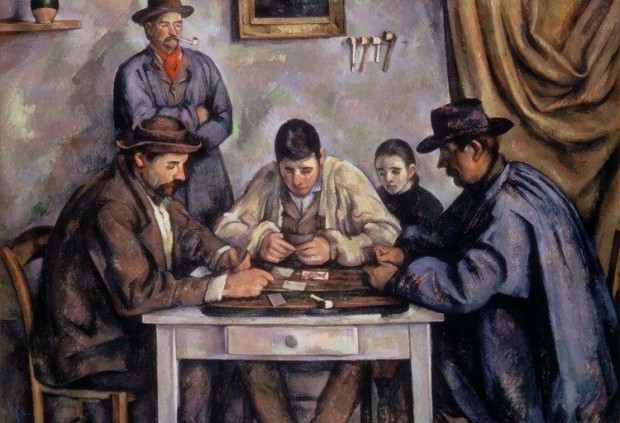Paul Cézanne in 10 Paintings
Paul Cézanne (1839–1906) was one of the most influential and greatest of the Post-Impressionist painters. Here is a list of ten different...
Sam Malone 17 February 2025
Paul Cézanne painted the theme of Card Players five times. Why is it so important? Critics consider the series to be a cornerstone of Cézanne’s art during his mature period, as well as a beginning to his final years when he painted some of his greatest works. In the 1880s, Cézanne was synthesizing and consolidating his art. At that time he moved decisively away from Impressionism and towards painting compositions in which he used verticals, horizontals, and diagonals both to build up mass and to establish structure.

All of the paintings depict Provençal peasants smoking pipes and playing cards. Some of the men worked on the Cézanne family estate. Before painting them in a composition, the artist created many sketches. But look at the paintings – they look like a human still life. Every scene is quiet and full of concentration.

The subject of card players is not new – the painter adapted the motif from 17th-century Dutch and French genre painting which often depicted drunken gamblers playing cards and other games in taverns. The difference is that those 17th-century paintings were full of drama, hysteria, and baroque energy. Conversely, Cézanne’s works have been noted for the lack thereof. They don’t carry any narrative or characterization. The men are not drinking. We also can’t see any money, an attribute which was typical for Dutch and French genre painting.

As previously mentioned, the painter created five of these paintings. The first one, from Barnes Foundation is the largest and includes the additional figures of a standing man and a woman in the background. The piece from the Metropolitan Museum follows the composition from Barnes Foundation although without the female figure. In the last three paintings, Cézanne continuously pared away details, focusing on just the pair of card players.

One of the paintings is in private hands. In 2011, Qatar’s royal family paid Greek shipping magnate George Embiricos more than $250 million for the honor of owning it, setting a new record for the highest price ever paid for a work of art.

DailyArt Magazine needs your support. Every contribution, however big or small, is very valuable for our future. Thanks to it, we will be able to sustain and grow the Magazine. Thank you for your help!